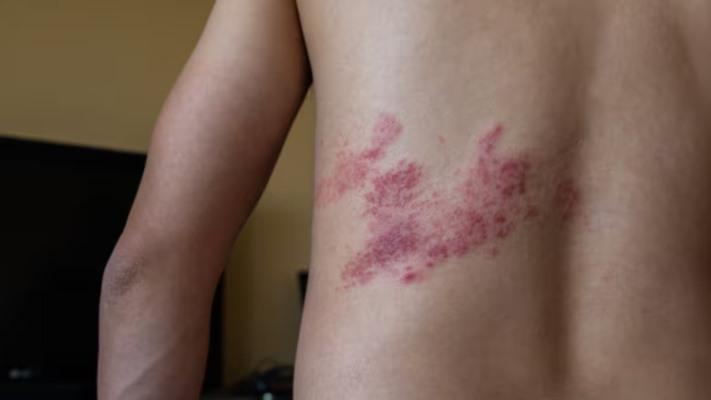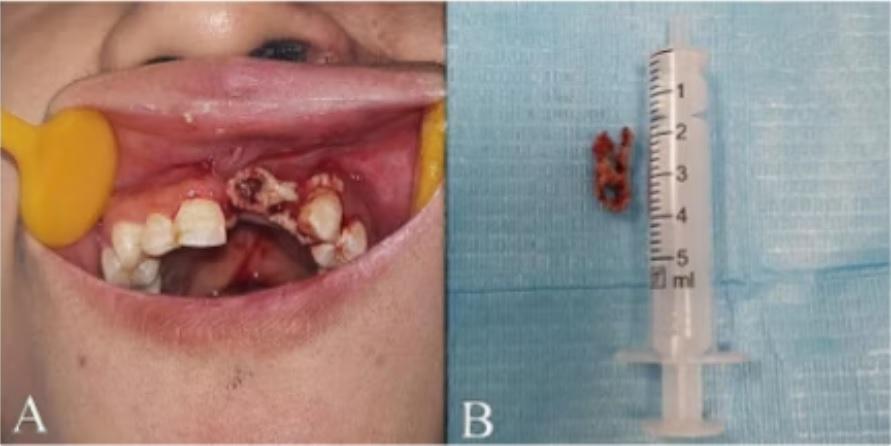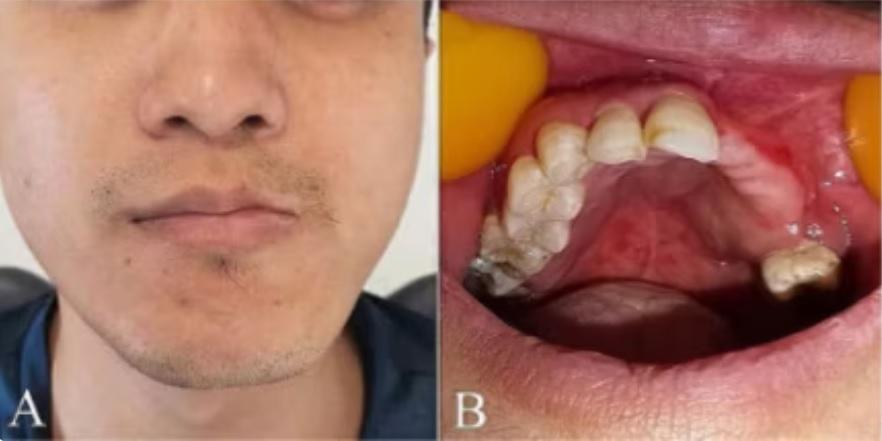A 29-year-old healthy man experienced a rare case of six tooth loss followed by osteonecrosis of the maxilla due to herpes zoster infection, a rash caused by the same virus that causes chickenpox.

This case highlights the importance of healthcare providers, particularly dentists, being aware of the precursors to herpes zoster (HZ) infection, commonly called shingles, to avoid needed procedures or delays in treatment, the authors write.
“Herpes infection of the face should be taken very seriously to receive timely treatment to prevent rare complications such as bone necrosis and tooth loss,” write the authors, led by Jianfeng He of Zhejiang University School of Medicine in China.
A 29-year-old man who lost an upper incisor
A healthy man with no history of chronic illness presented to the outpatient clinic after losing his central upper incisor approximately 12 hours earlier. Approximately two weeks before his tooth loss, he developed clusters of erythema and papules and bullae that developed from a small blister on the left side of his face and upper palate. He reported a burning sensation on the side of his face and upper palate that progressed to painful ulcers. The authors noted that he had no significant medical history other than childhood chickenpox.
(A) Extraoral photograph (frontal view) on the left shows multiple crusted lesions extending along the branches of the maxillary trigeminal nerve. (B) Intraoral photograph of an empty extraction socket showing smooth alveolar bone, no hemorrhage, and multiple large ulcerated mucosal surfaces. (C) Intraoral photograph showed swelling, hyperemia, and erosion of the hard palate in the upper left side of the mouth.

The man had superficial ulcers and scabs on the lip, nostrils, nose, and infraorbital area. He also had other ulcers of varying sizes on the lip and mucous membrane, as well as severe erythema, swelling, and hyperemia of the left upper gum.
The site where his tooth fell out showed exposed alveolar bone in the socket with no evidence of bleeding or pus. Imaging showed no osteonecrosis in the maxillary left jaw cavity.
Panoramic radiography during the first visit.

Based on the patient's medical history and clinical findings, a preliminary diagnosis of herpes zoster involving the maxillary branches of the trigeminal nerve was made. He was prescribed famciclovir, gabapentin, and metronidazole.
Approximately one month after the loss of the first tooth, dead bone was discovered in the area and was completely removed. Ultimately, the man was diagnosed with osteonecrosis due to herpes zoster.
(A) Intraoral photograph showed a sequestrum lesion in the area of the left upper anterior teeth. (B) The sequestrum was removed.

Four months later, he lost his second premolar. The canine, first premolar, and third molar were loose and had to be removed.
About a year after diagnosis, the scars and pigmentation on his face had resolved, and the damaged mucosa had healed. However, an examination revealed that there was still distal alveolar bone loss around the second upper left molar, the authors write.
(A) Extraoral radiograph shows that the facial scars and hyperpigmentation have mostly resolved. (B) Intraoral radiograph shows complete healing of the mucosa and gingiva.

This case describes an unusual complication
The herpes virus, which occurs when the chickenpox virus is reactivated, affects about 1 in 1,000 young people, but its incidence increases tenfold in older people. The report says that while the viral infection can cause complications, including burning pain in the nerves and skin, it is not usually associated with osteonecrosis or tooth loss.
“Reporting of unusual complications associated with trigeminal herpes zoster remains necessary,” He and colleagues wrote.
